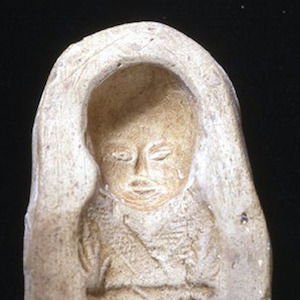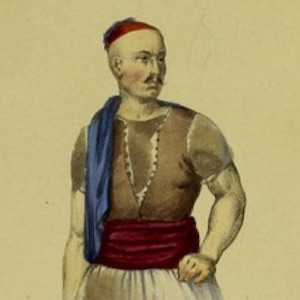Culture

Native American Children and Toys
Theodore de Bry included this colorful engraving in his publication of Hariot's, A Briefe and True Report of the New Found Land of Virginia (1590). It was based on a watercolor by John White (fig. 2) painted five or six years earlier.

Mencius and his Mother: A Lesson Drawn from Weaving
This illustration depicts a scene from the Traditions of Exemplary Women (Lienü zhuan) of Liu Xiang (ca. 77-6 BCE), one of China's first didactic texts on feminine morality. The text to this story is provided below the illustration. The story recounts the upbringing of Mencius (ca.

The Boy Prodigy: Xiang Tuo
These two images from the Later Han dynasty (2nd century CE) depict the most famous child in early Chinese literature, Xiang Tuo (pronounced She-Ang Too-o).

Earthenware Mold of a Swaddled Child
The earthenware mold for casting a figurine of an infant was found in Tangyangu China, and is likely dated to between 960 and 1279 CE, during the Song dynasty. The mold measures 3.2 inches long, and belongs to a collection of molds depicting men, women, and animals.

Massacre of the Priests
This image, also reproduced from the newspaper R*volutions de Paris, shows crowds massacring refractory clergy and prisoners.

Rock Art, Khoisan
Rock art, found on the walls of caves and on moveable rocks, was once thought to depict simple images of the daily lives of the Khoisan. In the last 20 years, study of oral traditions and close attention to what is actually depicted in the paintings has led to a complete revision of this theory.

Claude Antoine Rozet Paintings
One of the first tasks undertaken by the French military after the 1830 invasion was to visually depict, and thus classify, places, things, and people so as to rule more effectively. This is a pattern seen in all modern colonial regimes worldwide.

Triumph of the Parisian Army and the People
Returning home from the October march to Versailles, the women and the guardsmen display the heads of troops who confronted the marchers. Note the use of tree branches, symbolizing support for the revolution here as in other prints.

The Day of 21 July 1789
More common than clashes by workers against employers were protests over the rising price of bread. This color drawing depicts events at the City Hall of Strasbourg on 21 July 1789.

Drawing of Khoi Dancers
In the late 17th century, an anonymous artist did a series of impromptu sketches and set pieces showing Khoikhoi at the Cape of Good Hope.